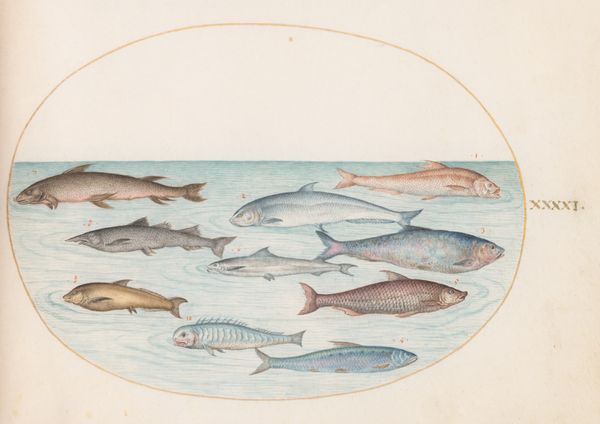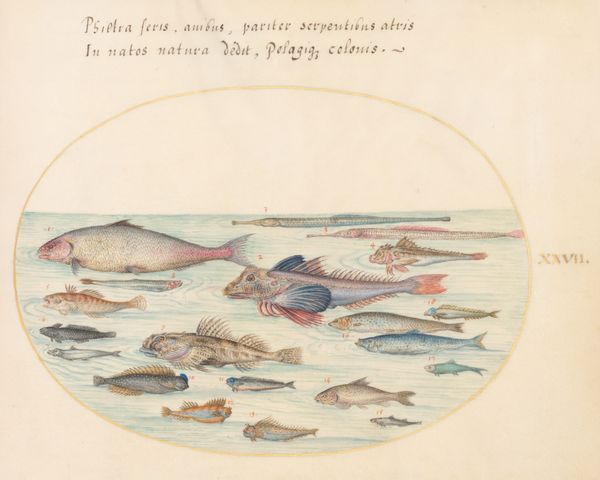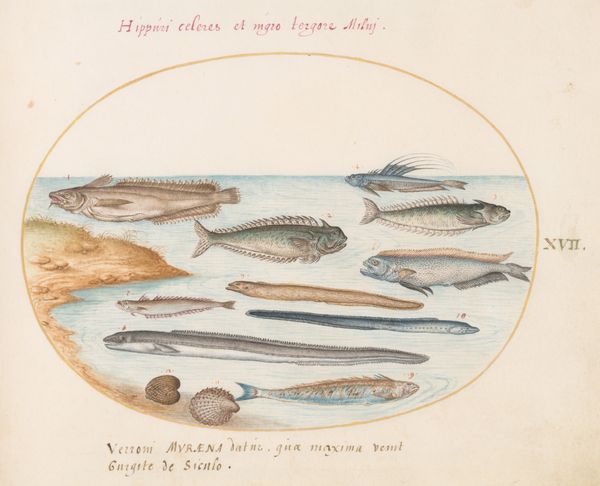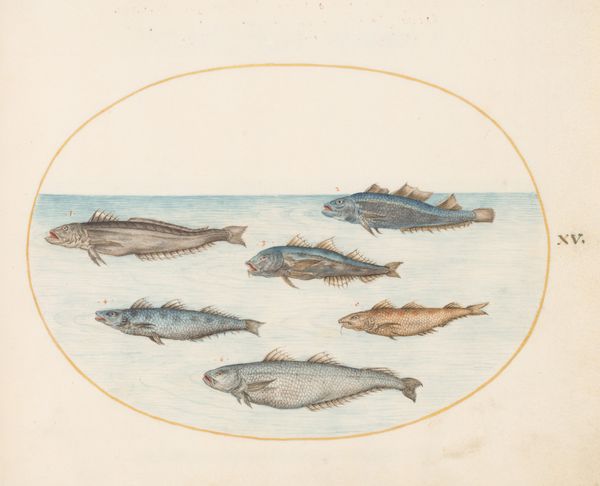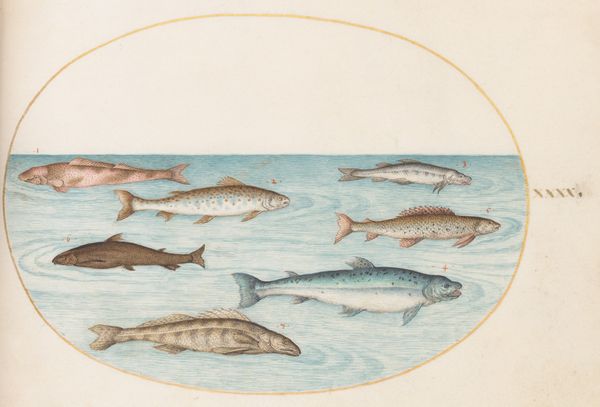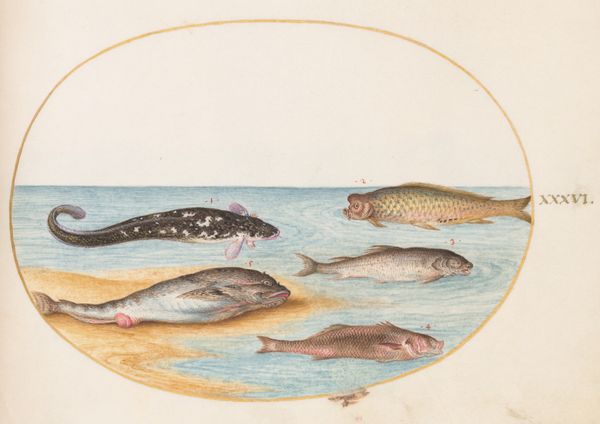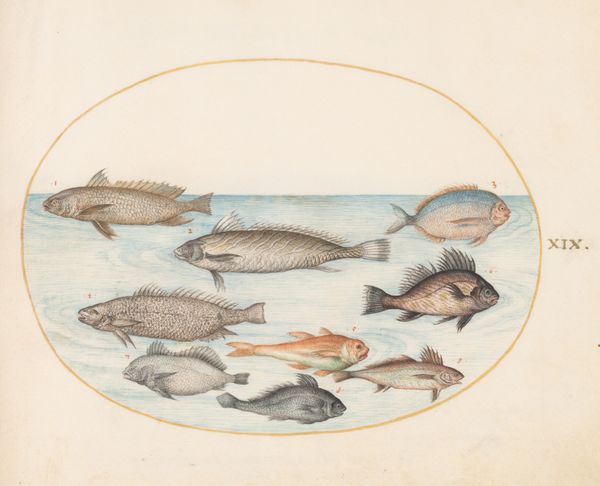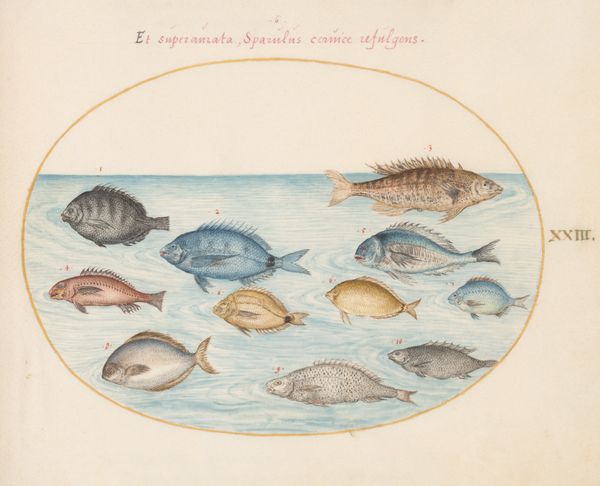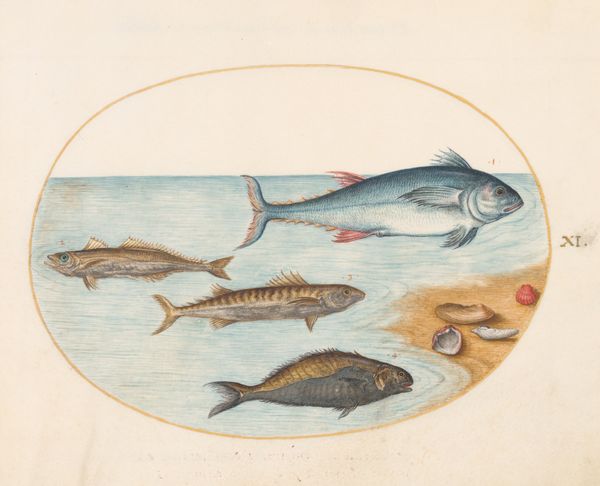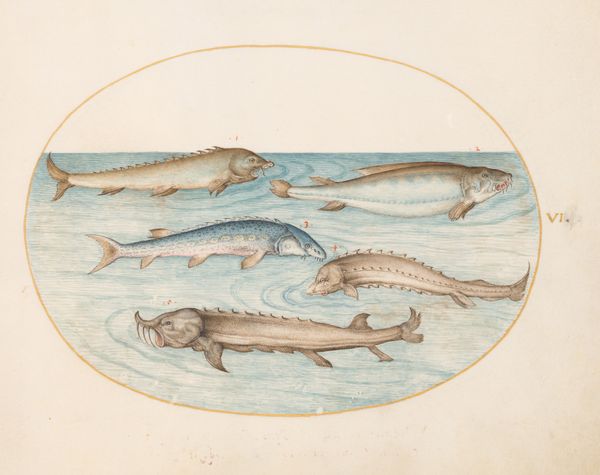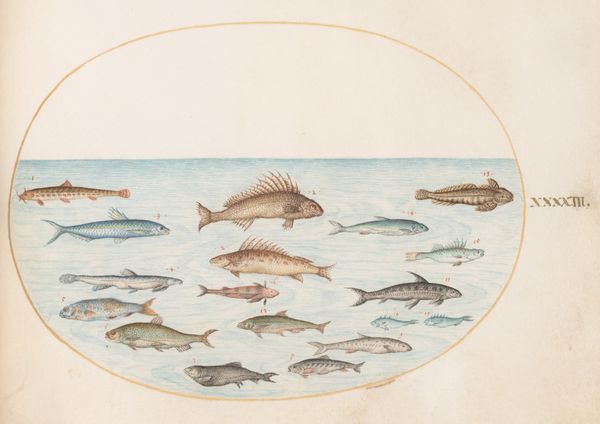
Plate 22: Mullet, Flying Fish, Eels, and Other Fish c. 1575 - 1580
0:00
0:00
drawing, watercolor
#
drawing
#
mannerism
#
11_renaissance
#
watercolor
#
watercolour illustration
#
academic-art
#
watercolor
Dimensions: page size (approximate): 14.3 x 18.4 cm (5 5/8 x 7 1/4 in.)
Copyright: National Gallery of Art: CC0 1.0
Curator: Let's dive into Joris Hoefnagel's "Plate 22: Mullet, Flying Fish, Eels, and Other Fish," created around 1575-1580 using watercolor and drawing techniques. Editor: It's a fascinating collection of fish, almost like a scientific catalog but rendered with an artist's touch. There's an ethereal quality to it, with the light colors and almost dreamlike depiction of these aquatic creatures. What can you tell me about this piece beyond its immediate visual appeal? Curator: Well, it's crucial to understand that this isn’t merely a scientific illustration, even if it appears to be. The Mannerist style, with its heightened artificiality, comes into play. Consider the political and social context of the late 16th century. Scientific discovery was intertwined with imperial ambitions and a desire to classify the world. Do you notice anything that seems... out of place? Editor: Now that you mention it, there is the peculiar, almost ornamental depiction of the fish; it feels more symbolic than observational, not unlike Renaissance bestiaries. But why create this sort of imagery? Curator: Hoefnagel wasn’t simply documenting; he was participating in a broader project of knowledge production that had profound social and political implications. These detailed images, part of natural histories, helped solidify a European understanding – and thus control – over the natural world. Think about the power dynamics at play: who gets to name, classify, and therefore own this knowledge? And to what end? Editor: It shifts my perspective, knowing this wasn’t just art for art's sake. The way the fish are presented now reads almost as trophies of a colonial enterprise. Curator: Exactly! It prompts us to examine the role of art in shaping perceptions and justifying power structures. The beauty and apparent objectivity of the illustration mask a deeper narrative about control, ownership, and the exploitation of the natural world. Editor: This definitely makes me reconsider the intention behind such seemingly straightforward depictions of nature. Thank you! Curator: Absolutely. These dialogues between art history and contemporary theory are essential for a richer and critical understanding of artworks like this.
Comments
No comments
Be the first to comment and join the conversation on the ultimate creative platform.
